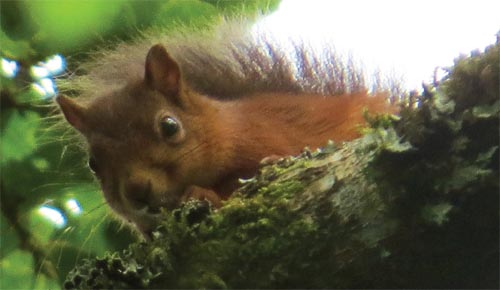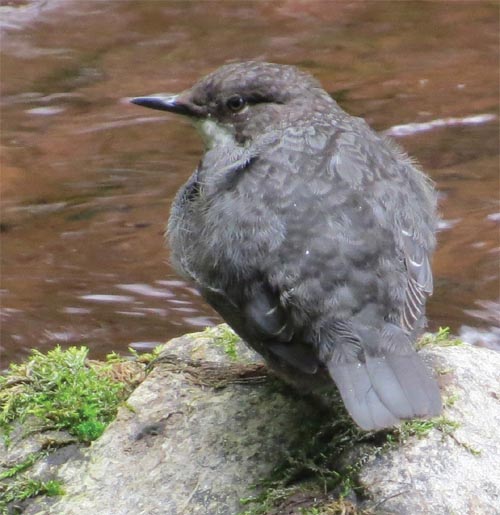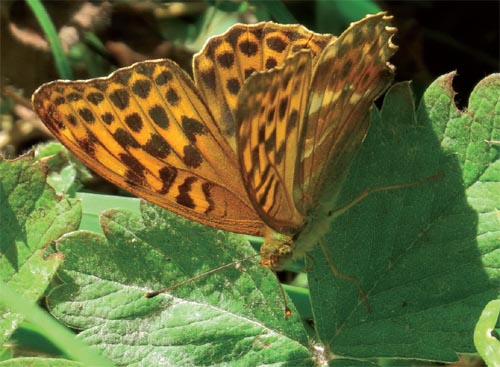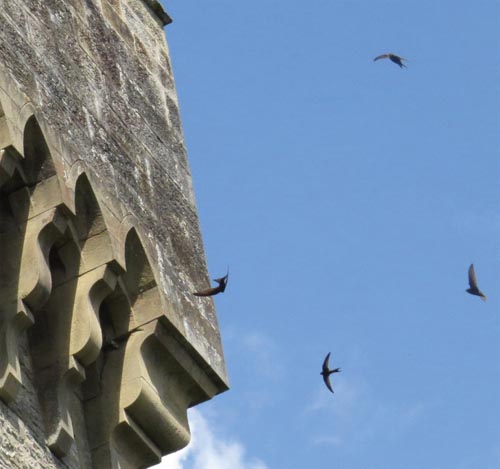Wildlife Newsletter for the Township of Dalkey
| September
/ 2018 - Michael Ryan
|
| Back
in mid-July we spent a few days in Waterford staying outside the town
of Cappoquin. Our hotel was literally a few doors down the road from
Mount Melleray Abbey which we strolled around to on our first evening.
A wide avenue leads up to a very impressive building built on rising
ground with a lovely view over hills and valley. To the left of the
avenue was a playing field and behind one of the goal posts a large
net, near enough to 20ft high, was stretched between poles, presumably
to catch way ward balls that might be heading for the road. It was
covered with perching birds, mostly House Martins with a few Swallows
among them, some sat along the top of the net others actually perched
on the threads of the mesh. For a moment I was afraid they might have
been trapped in it then was relieved to see they were flying in and
out of it at will. |
|
|
|
|
One of the reasons we had stayed in Cappoquin was after reading about a riverside walk at Glenshelane just outside the town. With trails of varying lengths all running along beside the wooded river it looked very promising and indeed it surpassed any expectations. The glen was lined by mostly native ash and moss-coated oak with some tall mature conifers on the steep er sides. From the conifers a Chiffchaff sang, very late in the season to be singing and indeed it was almost certainly the last time to hear one this year. The heatwave had reduced the river to a gentle bubbling flow but it was deep enough for little darting fish clearly visible in the water. It was deep enough too for the juvenile Dipper we spotted bobbing up and down on a rock below us. Dippers are unique for a Passerine (perching bird) since they feed in water, ‘dipping’ under the surface for aquatic invertebrates, such as the larvae of caddis and mayflies and even tiny fish. A thin membrane of flesh protects their eyes when underwater, known as a ‘nictitating eyelid’ it flashes almost white like a little metal shutter when the bird blinks. |
|
|
||
Glenshelane
apparently means Glen of the Faeries. If there were any there we didn’t
see them but we did see a delightful little creature that was new to
us. The path criss-crosses the river by a few small bridges and on the
other, sunnier, side of the glen we saw particularly lovely butterfly,
the Silver Washed Fritillary. We were to see a lot more of them along
the path as well as good numbers of Peacock, Red Admiral, Meadow Brown
and Green Veined White butterflies, many of them feeding on bramble
flowers alongside bumble bees and hoverflies in the warm sunshine. The glen was lovely but there was a fly in the ointment, specifi cally the Horsefly. Literally bloodsuckers, horseflies can deliver a nasty bite which is followed by serious irritation and there were lots of them menacing us, though we were able to fend them off before any could get their jaws into us. As we headed back to the car park I’d given up on any chance of seeing one of our favourite creatures which according to one website ‘.. There is evidence of..’ in the Glenshelane woods. Then Lucy stopped and whispered ‘A red squirrel!’ It had been on the ground, possibly burying food for the winter then had raced up a beech tree. Probably less familiar with humans then Killiney’s reds it peered down at us intently for ages. |
 |
|
| |
|
| Swifts
at Lismore castle flying close to their nests in alcoves of the tower Photo: Michael Ryan |
DALKEY HOME PAGE | DALKEY COMMUNITY COUNCIL | DALKEY HERITAGE COMPANY | CANNONAID





